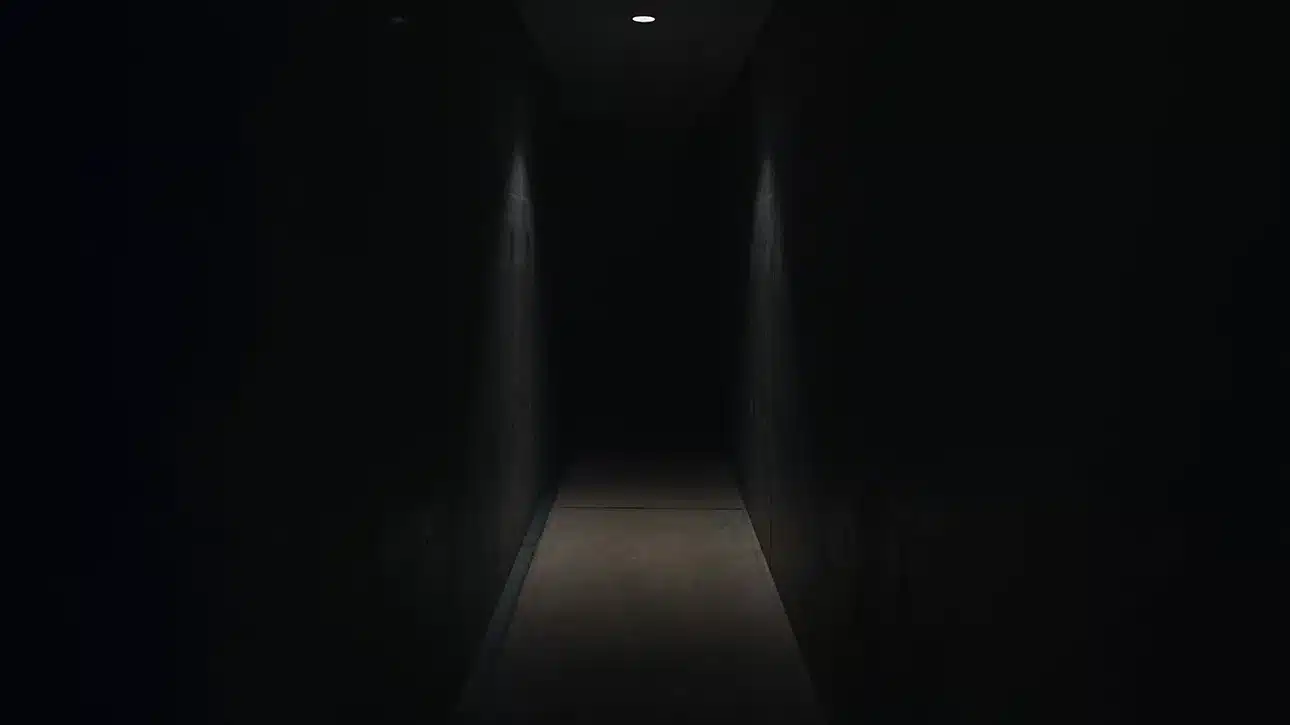Copyright popmatters

Heralded by the nationwide release of Chris Stuckmann’s highly anticipated directorial debut, Shelby Oaks, found footage horror movies have once again risen like Lazarus to the forefront of the Halloween season’s reigning genre. Despite an unyielding torrent of unparalleled advancements in film technology allowing for granular, almost microscopic precision, the staticky, deceptively unpolished aesthetic of found footage has kept its stranglehold on horror since clawing its way into the conceptual consciousness in the 1980s. A sort of elder millennial Roger Ebert, Stuckmann cut his teeth in film as a YouTuber and critic before Shelby Oaks entered preproduction back in 2021. Combining traditional and found footage horror, Shelby Oaks appears as a sort of nexus between the capabilities of the two mediums. Uniquely positioned as an internet-native filmmaker, Stuckmann’s approach to Shelby Oaks heralds a collision of ad hoc and traditional filmmaking, promising the arrival of one of horror’s newest, most exciting voices. After launching a Kickstarter campaign to fund the film’s production, Stuckmann’s choice to use found-footage horror in lieu of more technically impressive filmmaking speaks not only to the genre’s cultural staying power but also to its economically forgiving, creatively malleable qualities. Stuckmann’s choice to use found footage is not only indicative of the subgenre’s cultural cache, but also gestures more broadly to the increased way in which our fears and anxieties are tempered through (and often exacerbated by) the technology through which we engage with it. Found Footage Horror Movies’ First Spawning Decades before the lo-fi subgenre was popularized by the 1999 horror classic The Blair Witch Project, the “found footage” production technique (in which a horror movie’s aesthetically amateur footage is purportedly “recovered” from the story’s character) was galvanized by Italian filmmaker Ruggero Deodato’s 1980 classic Cannibal Holocaust. Inspired by sensationalized media coverage of the Italian paramilitary group the Red Brigades, Deodato used handheld 16 mm cameras to film throughout the Amazon Rainforest, blending real and staged violence to stylistically mimic the amateur exploitation documentaries then gaining popularity. Initially unduly reliant upon an audience’s willful suspension of disbelief, as more of the world’s all too real horrors are caught on film and our understanding of society writ large is increasingly tempered through the lens of a camera, found footage horror movies’ “unreality” has garnered an enigmatic authenticity that has sublimated the once amateur-exclusive film technique and become a horror movie mainstay that keeps creeping back, like the re-release of the eighth installment in the seminal found footage film franchise V/H/S. Prior to catapulting into mainstream popularity with the release of The Blair Witch Project in 1999, the found footage horror movie technique was predominantly relegated to the fringe of amateur cinema, as more stylized, moneyed productions became the norm. Employing raw, often unedited first-person cinematography, found footage horror movies’ intentional inclusion of shaky camerawork, low-grade footage quality, and nonlinear storytelling denote a feature rather than a failure of the medium. By situating the audience as a direct extension of its characters, found footage horror movies lend the production an eerie, uncanny quality that ensnares viewers. By collapsing the real and imagined spaces between the audience and the film’s characters, the illusory division between fiction and reality continues to erode. Produced on a shoestring budget of just $60k, The Blair Witch Project typified the found footage horror-movie ethos through its use of improvised dialogue, grainy camcorder footage, and online guerrilla marketing, suggesting the film’s events were authentic. Pulling in nearly a quarter of a billion dollars at the international box office, The Blair Witch Project quickly became one of the most profitable independent films to date, highlighting the commercial and creative potential of found footage films. Despite The Blair Witch Project’s dubiously ethical promotion and marketing, it undeniably reinvigorated the found footage film technique and altered the horror landscape in perpetuity. A widely democratizing movement in film, the success of The Blair Witch Project illustrated the potential of low-budget films to reach widespread mainstream success. Unfettered by overly elaborate production design and restrictive cinematography, found footage allows amateurs and auteurs alike to place substance over style without detracting from the film’s central themes. While most studio-produced, traditionally shot films can easily cost upwards of $1 million, found footage’s relatively affordable overhead frees time and resources to be directed to the film’s writing, performances, marketing, or casting. Nearly a decade after The Blair Witch Project’s release, found footage was thrust back into the spotlight when Israeli filmmaker Oren Peli’s 2007 found footage horror movie Paranormal Activity became a pop culture sensation. Masterfully restrained, highly atmospheric, and perfectly understated, Paranormal Activity follows a young couple, Micah and Katie, through “recovered” home surveillance footage the pair captured in an effort to explain the paranormal phenomena plaguing Katie since childhood. Much like The Blair Witch Project, Paranormal Activity capitalized on found footage’s affordability and creative malleability, producing the film for around $15k. What’s Missing in Found Footage Horror As other horror films largely become preoccupied by and increasingly reliant on the visual, both The Blair Witch Project and Paranormal Activity revel in a decided absence of optic fanfare. Both the titular “Blair Witch” and Paranormal Activity’s haunting demonic force are hardly, if at all, seen within the films themselves; their looming, preternatural presence instead magnified by the cast’s growing paranoia and descent into exhausted delirium. This intentional absence underscores the subliminal power of found footage horror movies. By allowing the audience to fill in the gaps presented to them, they are elevated to unwitting co-authors of their own terror. Just as found footage serves as a response to the ever-increasing prevalence of home video, the genre morphed once more with the emergence of “screenlife”– a chimeric successor of found footage films wherein the entirety of the film’s events are presented or transpire on the screen of a phone, computer, or tablet. Popularized by Levan Gabriadze’s 2014 horror flick Unfriended, Gabriadze’s novel approach to filmmaking about teenage cyberbullying attracted significant attention, touching on a broader cultural anxiety about the ubiquity and omnipresence of life online. Much as traditional found-footage films situate the audience in an unsettlingly familiar vantage point through seemingly amateur footage, screenlife films respond to the ever-expanding social media panopticon and its incessant irruption into everyday life. Found Footage Horror Will Never Go Away In theorist Mark Fisher’s 2016 book The Weird and The Eerie, Fisher elucidates these ineffable perturbations and their centrality to contemporary horror. Fisher describes “the weird and the eerie” as a “preoccupation with the strange” and a “fascination for the outside, for that which lies beyond standard perception, cognition and experience.” Fisher connects this idea of our preoccupation with the beyond to Freud’s “unheimlich”—a certain uncanniness that unsettles us and represents the intrusion of “the strange” into the familiar. This incongruity—the invasion of some unknown chthonian into the quotidian—is the crux of what makes found footage so compelling. The manufactured naturalism and jarring juxtaposition of found footage horror movies coexist in perfect symbiosis with the ineffable magnetism Fisher aptly calls “the weird and eerie.” Regardless of film technology allowing for an almost unprecedented level of realism, the tempered reality in found footage horror movies more closely resembles the interface-based reality with which we’re accustomed to engaging. It is the very imprecision and fallibility of found footage that infuses it with a kind of hyper-realistic facsimile of a more familiar type of terror. Through an insertion of the strange into the mundane, found footage filmmakers are able to capitalize upon the negative space created by the genre to allow viewers to create terrors tailormade to their understanding. In found footage horror movies, storytelling and the subconscious do all the heavy lifting. Found footage horror movies, from Shelby Oaks to Paranormal Activity and Unfriended, reflect a media landscape in which the already nebulous line between reality and fiction becomes increasingly tenuous. Whether capturing the primal fear of the unknown or the anxieties of digital surveillance, the genre remains uniquely equipped to engage with contemporary cultural concerns. In an era when cameras dictate and distort our perception, found footage offers a disquieting simulacrum for a world perpetually watched but never wholly real.



